
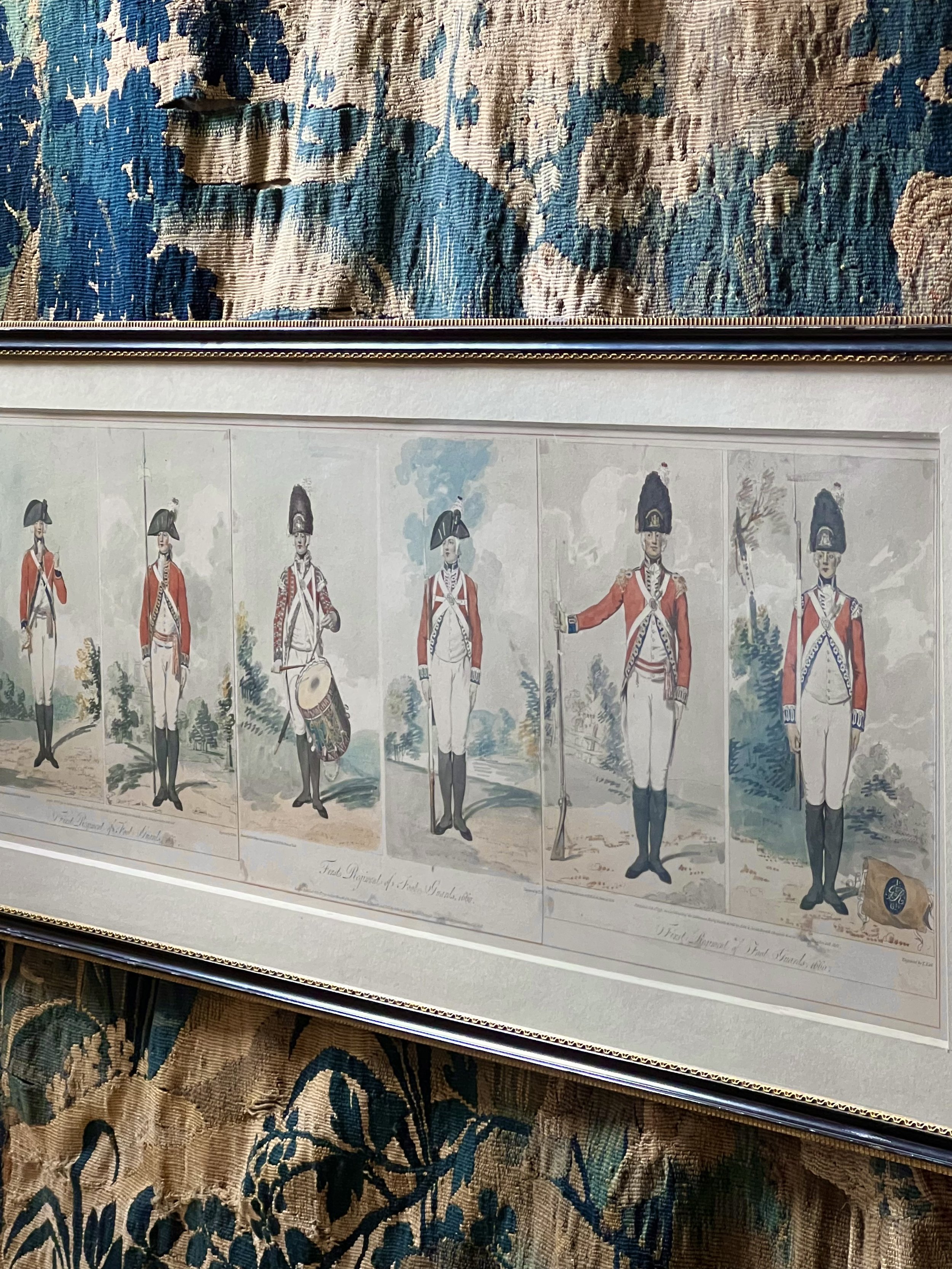
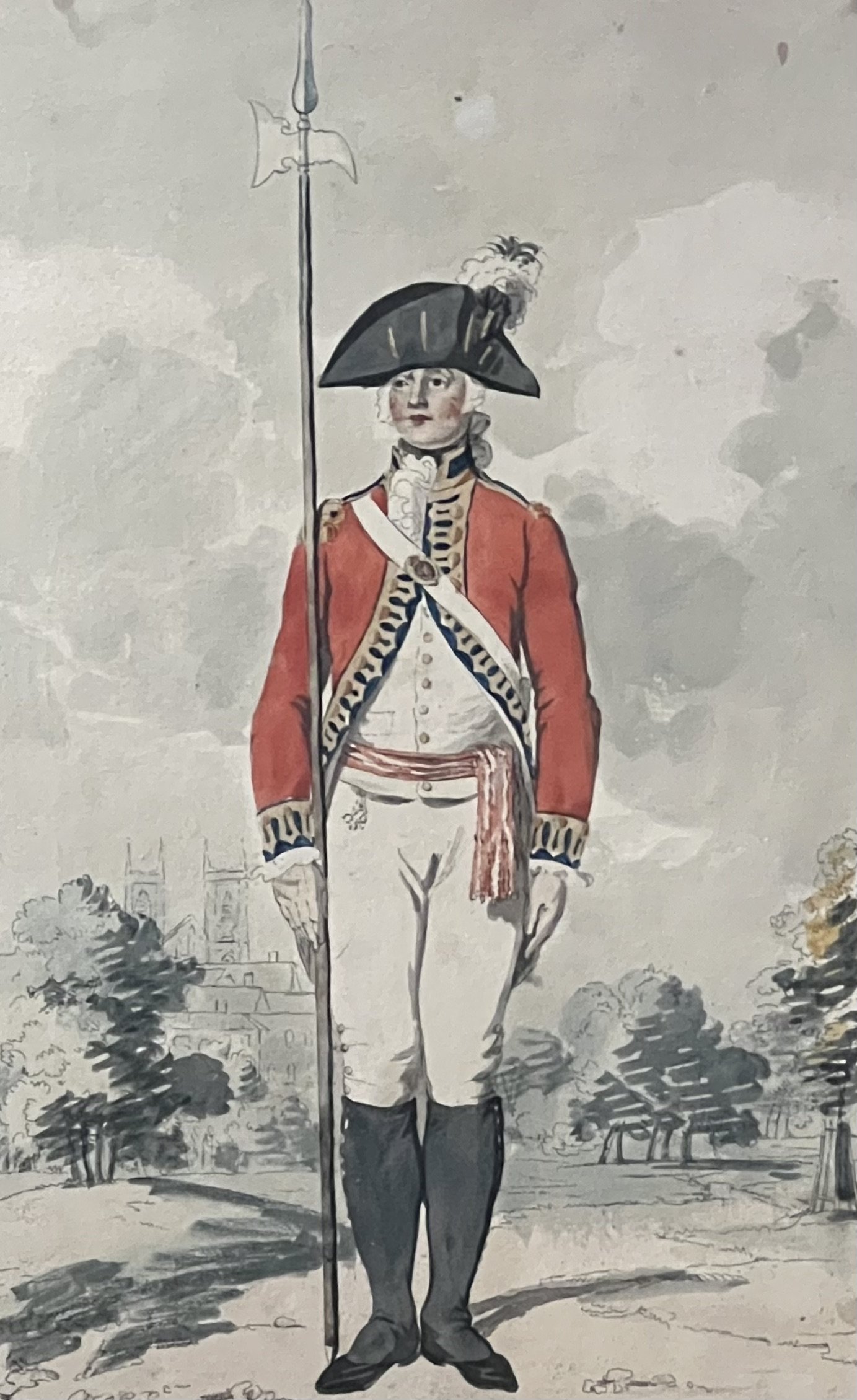
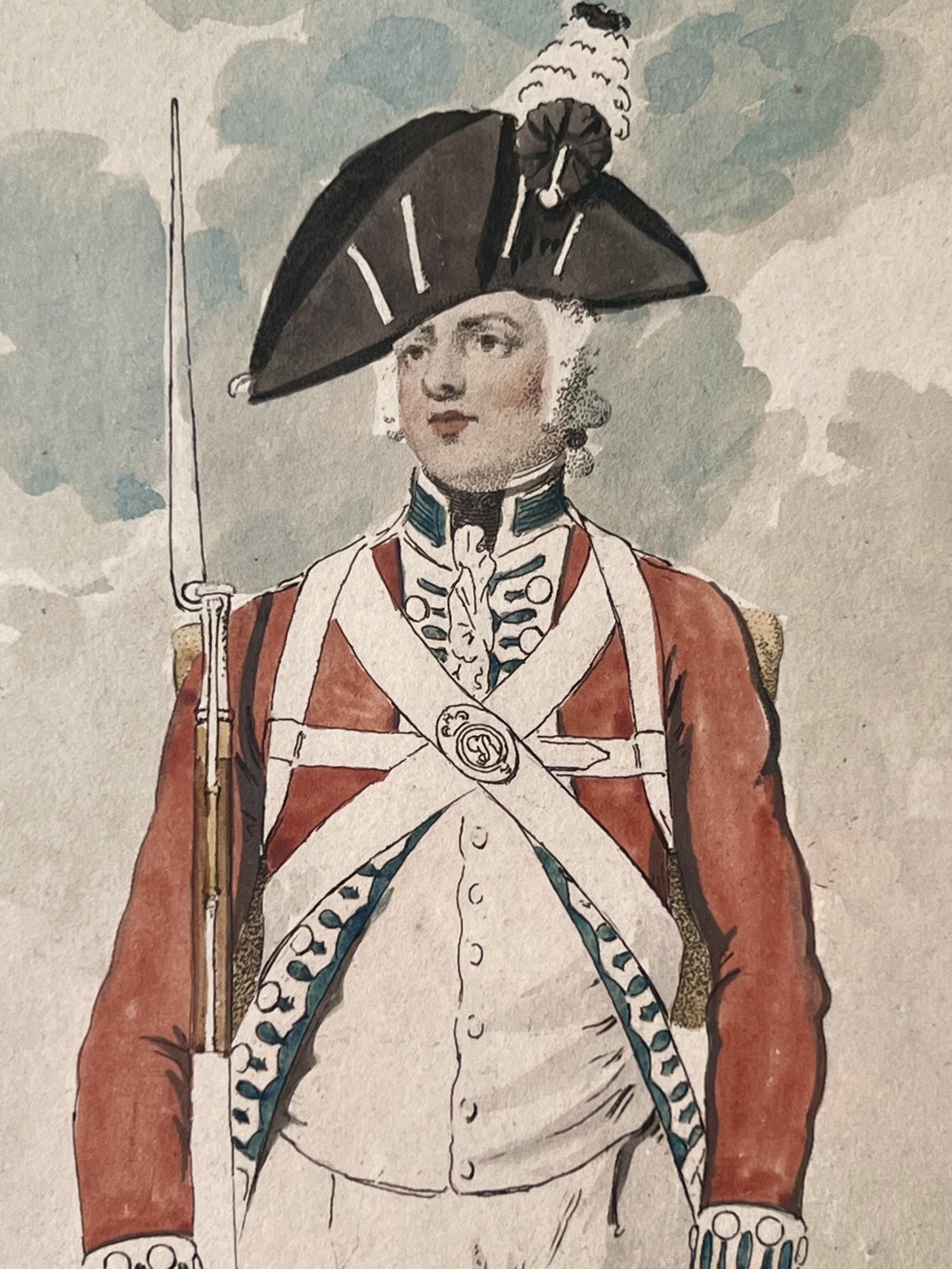
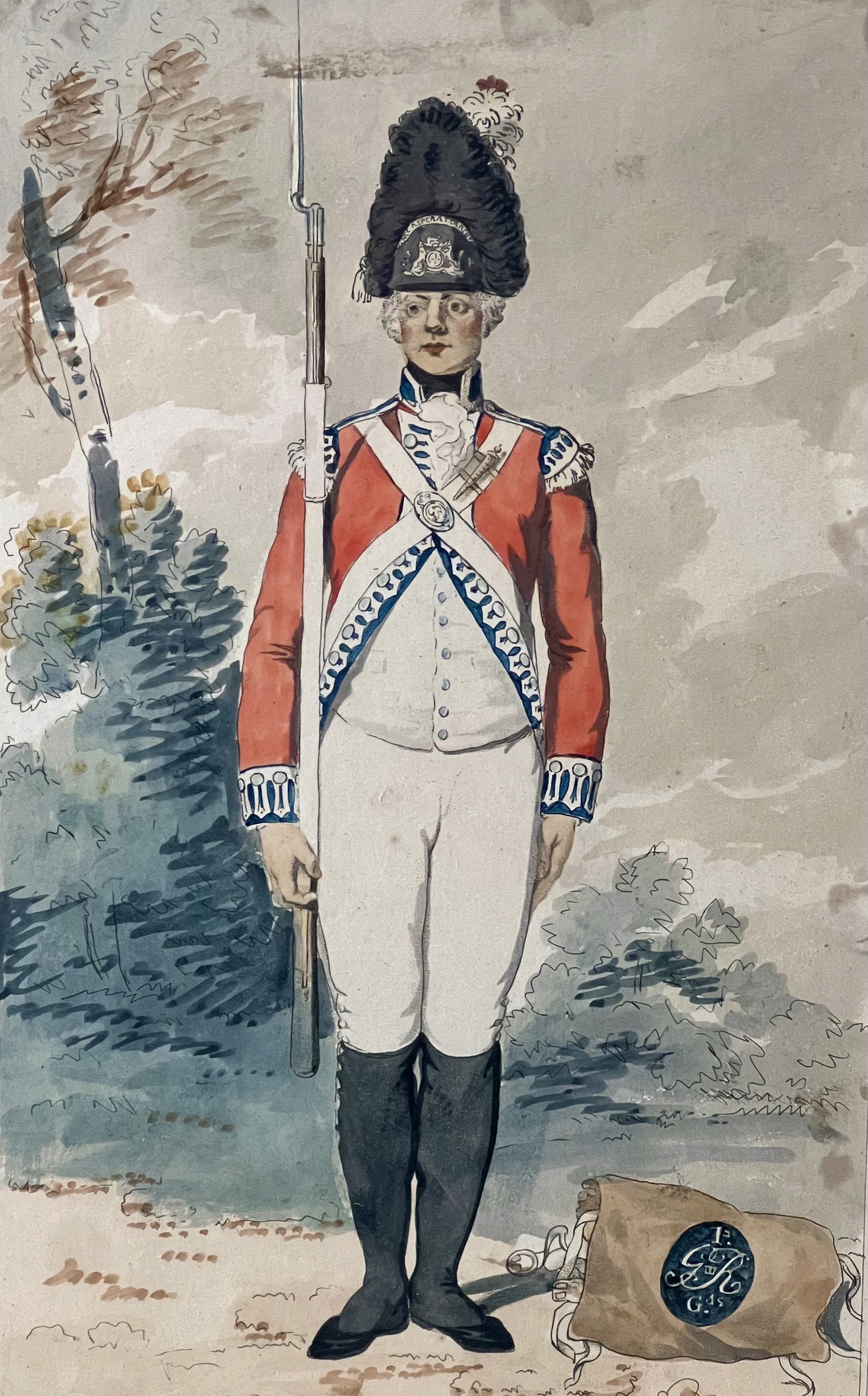
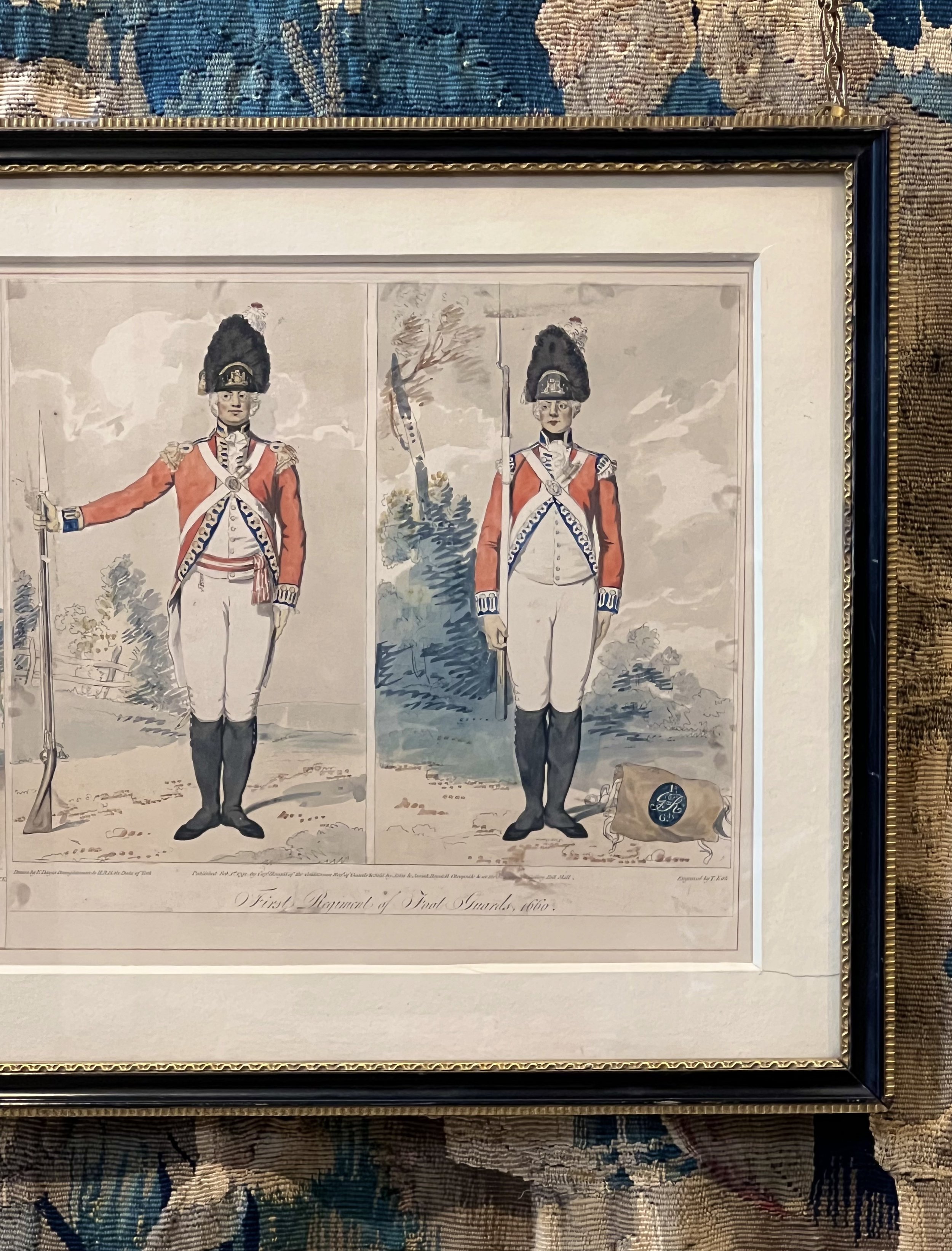
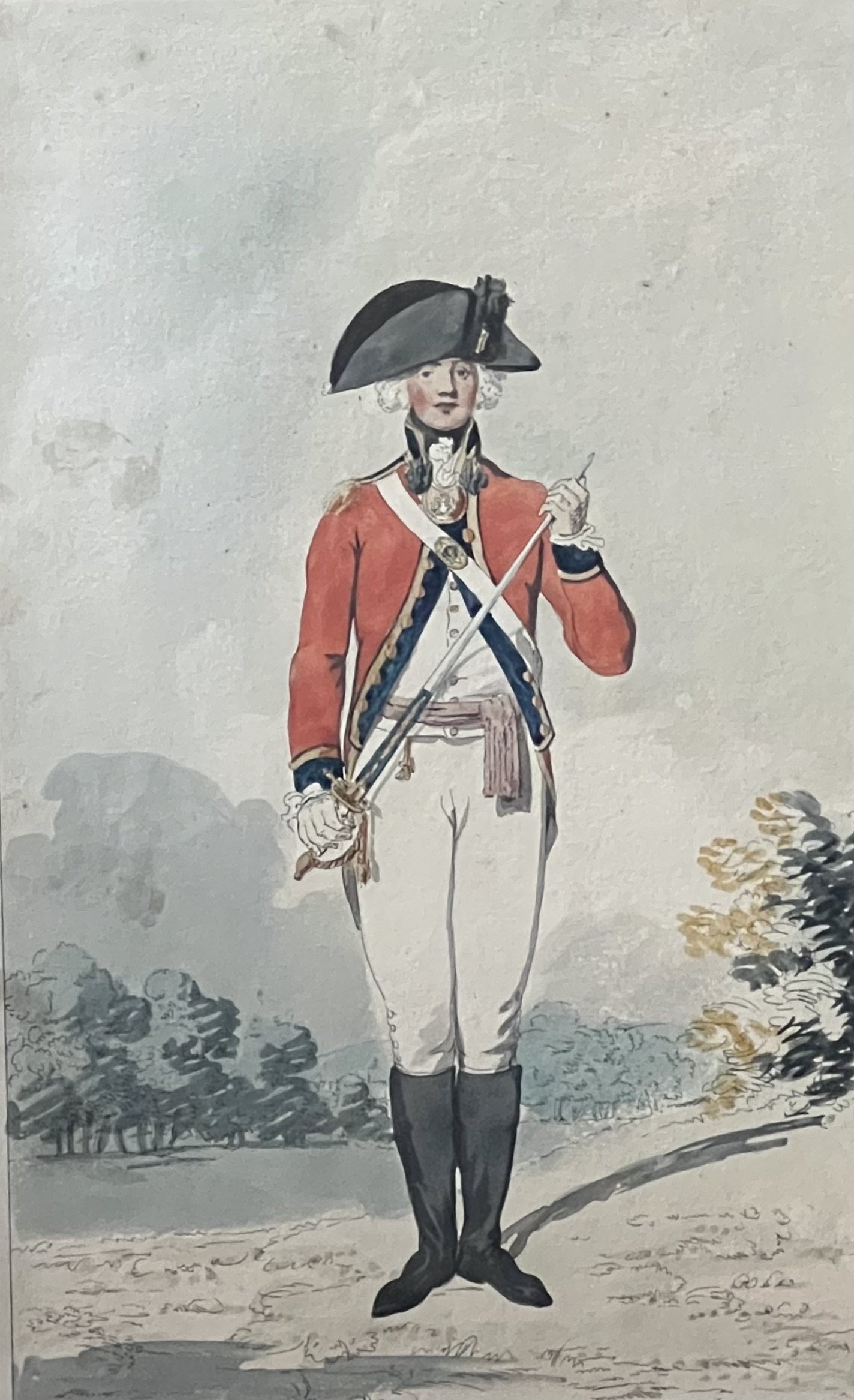


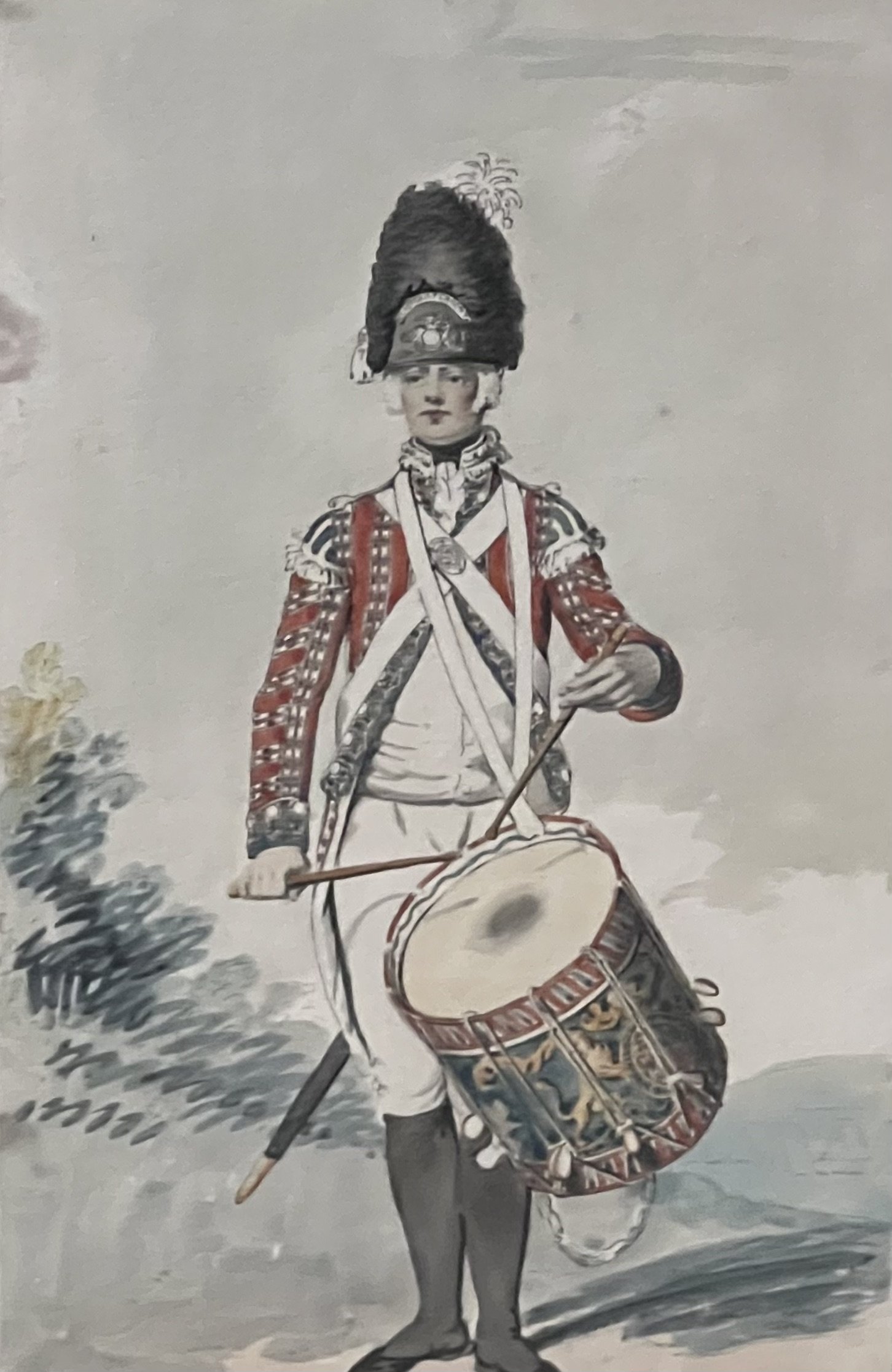
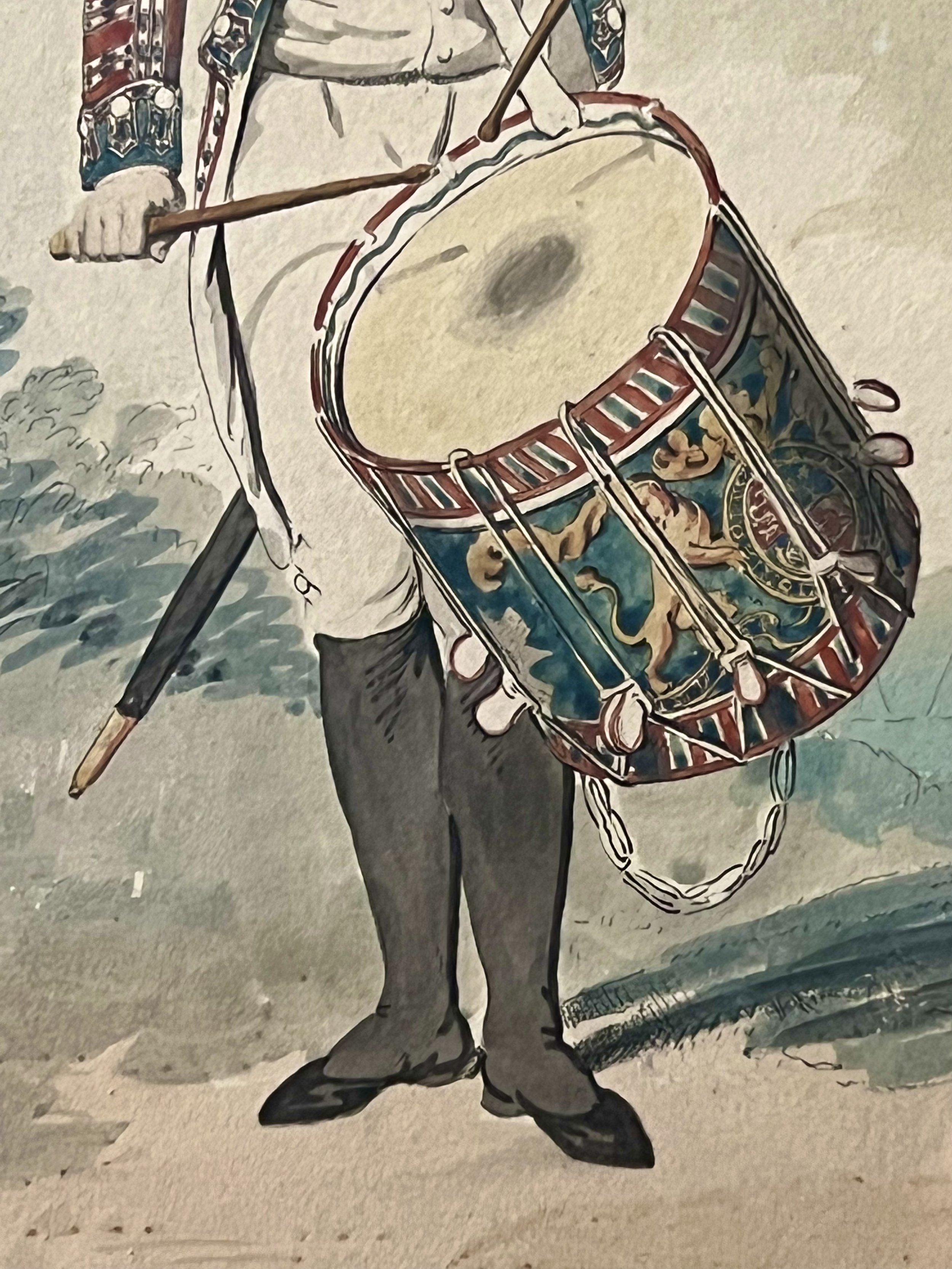

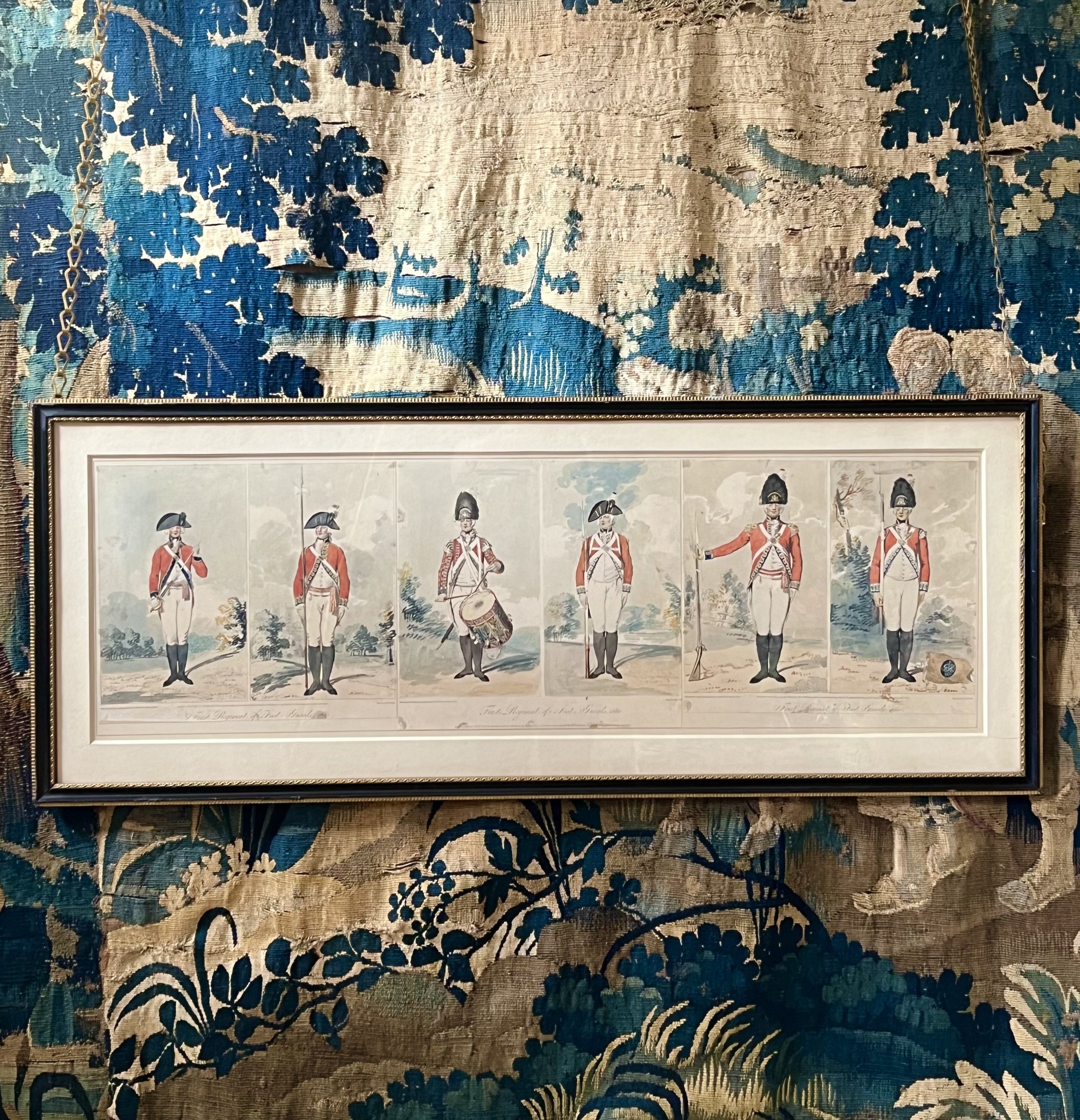
HIS GRACIOUS MAJESTY KING GEORGE III - BY ANTHONY CARDON AFTER HENRY EDRIDGE.
Three very rare, beautifully finished coloured plates from a series of nine military mezzotint/etchings showing the dress of the Foot Guards and the first nine regiments of foot with two figures on each plate. Published in London by Captain Hewgill of the Coldstream Guards and sold by John & Josiah Boydell. 1792-3, after a drawings by Edward Dayes. Nevill considers these to be "the most attractive representations of English uniforms ever executed" (page XXXI).
The regiment was raised at Bruges in 1656 by King Charles II whilst he was in exile in Belgium. The King, allied to the Spanish, was short of funds and so only five regiments were raised, the most loyal supporters formed 'the Royal Regiment of Guards'. Upon his restoration to England the King raised another Regiment of Foot Guards, namely the King's Regiment of Guards, for his protection. On the death of Thomas, Lord Wentworth in 1665, these two Regiments were joined to form the First Regiment of Foot Guards. this title remained from thence until 1815 when, due to the Regiment's actions at Waterloo, it was granted the present title - The Grenadier Guards. Often referred to as 'Pontius Pilate's Body Guard' the First Regiment of Foot is the oldest in the British Army, and was posted to North America during the French & Indian War 1757-1763; stationed in Canada & New York serving in Louisburg, Nova Scotia & Ticonderoga.
Apart from their rarity (very limited numbers being produced), the desirability of these fine images is assured as it is the work of the colourist that makes them so collectable. They are reputed to be the watercolour work of Joseph Mallord William Turner (1775-1851) who as a lad of seventeen was Dayes' apprentice, and it was to him that the task of tinting these fine military images fell (Carman xvii).
The technique of minimalist etched guidelines allowed full scope for the talented colourist to create subtle and interesting shading. A technique and individual style which was to be perfected to such great effect in his later works.
Edward Dayes who began his career as a pupil of William Pether and rose to become draughtsman to H.R.H. the Duke of York. Known as a painter of watercolours of a simple, yet graceful, character producing views of considerable merit; much like the character of the man himself. He taught drawing and wrote a book upon the subject. Although frequently praised for the excellence of his figure drawings (as may be seen from this fine plate) he, alas, took his own life, as a result of a loss of a contract, in May 1804.
The outline plate was etched by Thomas Kirk (fl.1785-97). A pupil of R. Cosway, Kirk became well known as an artist and engraver. He first exhibited at the Royal Academy in 1785 and twelve years later died of consumption, continuing to work right up to the end and being supported in his chair the day before his death to put the finishing touches to a proof. Dayes said of him that "He passed like a meteor through the region of art.”
Provenance: The collection of the late Willie Landels former editor of Harpers & Queen magazine.
Condition: Fine and bright, with slight staining outside the main image pictured.
Size: 47cm x119cm framed.
Price: £4250

